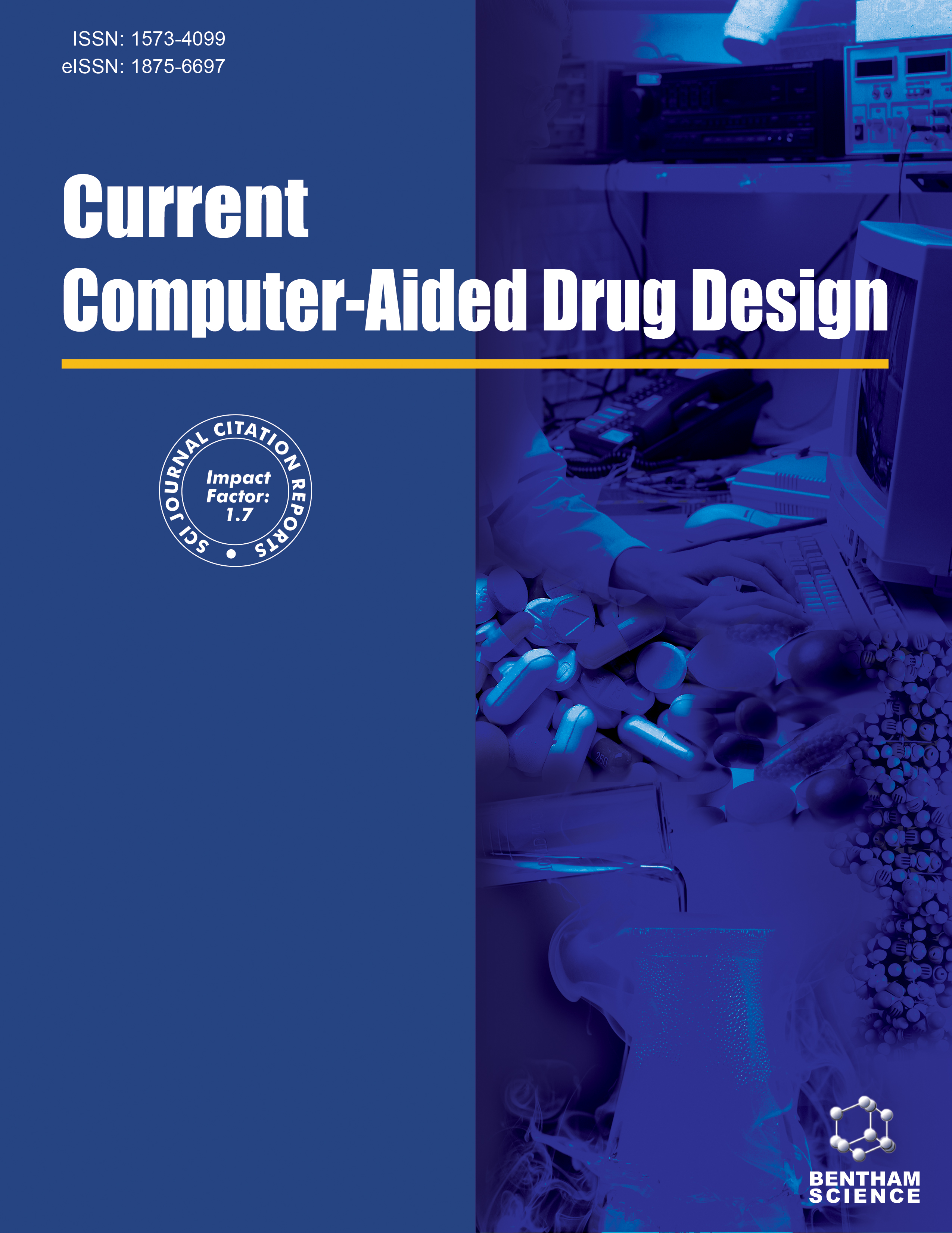- Home
- A-Z Publications
- Current Computer - Aided Drug Design
- Previous Issues
- Volume 4, Issue 2, 2008
Current Computer - Aided Drug Design - Volume 4, Issue 2, 2008
Volume 4, Issue 2, 2008
-
-
On the Paradigm Shift Towards Multitarget Selective Drug Design
More LessAuthors: Nigus Dessalew and Workalemahu MikreModern drug discovery has contributed much to the progress of medicine and well being of societies during the past century. Generally, a disease relevant macromolecule is studied first in vitro, in cells and in whole organisms, and evaluated as a potential drug target for a specific therapeutic intervention. Medicinal chemistry projects then commence by the search and identification of a binding partner for the single macromol Read More
-
-
-
Predictive QSAR Models for Polyspecific Drug Targets: The Importance of Feature Selection
More LessSince the advent of QSAR (quantitative structure activity relationship) modeling quantitative representations of molecular structures are encoded in terms of information-preserving descriptor values. Nowadays, a nearly infinite variety of potential descriptors is available and descriptor selection is no longer a task which can be done manually. There is an increasing need for automation in order to reduce the dimensionality of the d Read More
-
-
-
Enzyme-Substrate Binding Interaction Energies and Their Application to the Cytochrome P450 System
More LessAuthors: David F.V. Lewis, Yuko Ito and Peter S. GoldfarbThe various contributions to binding energies for cytochrome P450 enzyme-substrate interactions are discussed in the light of intermolecular forces of attraction in biological systems. These energies include: electrostatic, van der Waals, hydrogen bond, π-π stacking and desolvation processes. These individual components can be used to estimate the binding energies of P450 substrates, and the example of camphor in CYP101 i Read More
-
-
-
Exploring the Odorant Binding Site of a G-Protein-Coupled Olfactory Receptor
More LessAuthors: Sayako Katada, Takatsugu Hirokawa and Kazushige TouharaThe olfactory system has sophisticated molecular mechanisms for recognizing and discriminating an enormous number of odorants. The detection of odorants in mammals is mediated by several hundreds of olfactory receptors (ORs), which comprise the largest superfamily of G-protein-coupled receptors (GPCRs) in the genome. Because GPCRs are major targets for therapeutic application, ample experimental data and compute Read More
-
-
-
Variable Selection in QSAR Models for Drug Design
More LessQSAR modeling, a powerful method for the computer - aided drug design, demands appropriate choice of molecular structure description. At present thousands descriptors of molecular structure are suggested in QSAR and QSPR approaches. The selection of a subset of the most relevant molecular descriptors, used as variables, is important step in model development. In this short review recently reported algorithms for v Read More
-
-
-
How to Efficiently Include Receptor Flexibility During Computational Docking
More LessAuthors: Andreas May, Florian Sieker and Martin ZachariasTarget-based drug design uses available 3D structural information of receptor molecules to either dock putative ligand molecules to receptor binding sites or to de-novo design new ligands. In many cases accurate prediction of putative binding geometries requires the appropriate inclusion of conformational flexibility of both the ligand as well as the receptor structure. The problem of appropriate treatment of conformationa Read More
-
Volumes & issues
-
Volume 21 (2025)
-
Volume 20 (2024)
-
Volume 19 (2023)
-
Volume 18 (2022)
-
Volume 17 (2021)
-
Volume 16 (2020)
-
Volume 15 (2019)
-
Volume 14 (2018)
-
Volume 13 (2017)
-
Volume 12 (2016)
-
Volume 11 (2015)
-
Volume 10 (2014)
-
Volume 9 (2013)
-
Volume 8 (2012)
-
Volume 7 (2011)
-
Volume 6 (2010)
-
Volume 5 (2009)
-
Volume 4 (2008)
-
Volume 3 (2007)
-
Volume 2 (2006)
-
Volume 1 (2005)
Most Read This Month
Article
content/journals/cad
Journal
10
5
false
en


